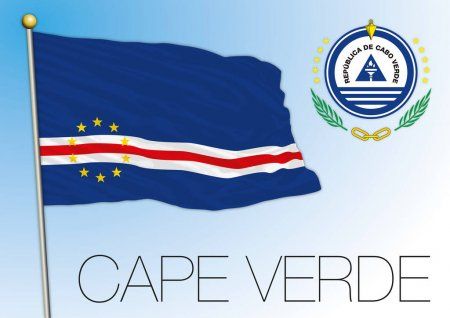Headlines
The History of Cabo Verde: From Uninhabited Islands to Portuguese Colony and Independence

Cabo Verde, also known as Cape Verde, is a group of 10 volcanic islands located in the Atlantic Ocean, about 570 kilometers off the coast of West Africa. The islands were uninhabited until they were colonized by Portugal in the mid-15th century.
See Population, Official Language And More…

Cabo Verde
Although there is no conclusive evidence that the islands were inhabited before the arrival of the Portuguese, cases may be made for visits by Phoenicians, Moors, and Africans in previous centuries. Portuguese navigators such as Diogo Gomes and Diogo Afonso, Venetian explorer Alvise Ca’ da Mosto, and Genoese navigators such as António and Bartólomeu da Noli began to report on the islands in the mid-15th century, shortly before a plan of active colonization and settlement was launched.
In 1462, the first settlers from Portugal landed on São Tiago (Santiago), subsequently founding there the oldest European city in the tropics—Ribeira Grande (now Cidade Velha). Sugar was planted in an attempt to emulate the success of the earlier settlement of Madeira. Cabo Verde’s dry climate was less favorable, but with the development of the transatlantic slave trade, the importance and wealth of the islands increased. Cabo Verde served an increasingly important role as an offshore entrepôt with the development of the triangular trade, by which manufactured goods from Europe were traded for enslaved people, who were sold in turn to plantations in the New World in exchange for the raw materials produced there; with these, the ships returned home. Cabo Verde was thus a center for the trade of cheap manufactured items, firearms, rum, cloth, and the like in exchange for enslaved people, ivory, and gold. Cabo Verde was especially known for its pano cloths, usually constructed of six strips of fabric made from cotton that was grown, dyed dark indigo, and woven on narrow looms by people who were enslaved in Cabo Verde; the cloths were a valuable form of currency for the slave trade on the mainland.
After centuries under Portuguese rule, Cabo Verde won its independence in 1975. Praia on Santiago Island became its capital.
Cabo Verde is a group of 10 volcanic islands located in the Atlantic Ocean, about 570 kilometers off the coast of West Africa. The islands were uninhabited until they were colonized by Portugal in the mid-15th century. Although there is no conclusive evidence that the islands were inhabited before the arrival of the Portuguese, cases may be made for visits by Phoenicians, Moors, and Africans in previous centuries. Portuguese navigators such as Diogo Gomes and Diogo Afonso, Venetian explorer Alvise Ca’ da Mosto, and Genoese navigators such as António and Bartólomeu da Noli began to report on the islands in the mid-15th century, shortly before a plan of active colonization and settlement was launched. In 1462, the first settlers from Portugal landed on São Tiago (Santiago), subsequently founding there the oldest European city in the tropics—Ribeira Grande (now Cidade Velha). Sugar was planted in an attempt to emulate the success of the earlier settlement of Madeira. Cabo Verde’s dry climate was less favorable, but with the development of the transatlantic slave trade, the importance and wealth of the islands increased. Cabo Verde served an increasingly important role as an offshore entrepôt with the development of the triangular trade, by which manufactured goods from Europe were traded for enslaved people, who were sold in turn to plantations in the New World in exchange for the raw materials produced there; with these, the ships returned home. Cabo Verde was thus a center for the trade of cheap manufactured items, firearms, rum, cloth, and the like in exchange for enslaved people, ivory, and gold. Cabo Verde was especially known for its pano cloths, usually constructed of six strips of fabric made from cotton that was grown, dyed dark indigo, and woven on narrow looms by people who were enslaved in Cabo Verde; the cloths were a valuable form of currency for the slave trade on the mainland.
After centuries under Portuguese rule, Cabo Verde won its independence on July 5th, 1975. Aristides Pereira became its first president and Pedro Pires became its first prime minister. Praia on Santiago Island became its capital.





